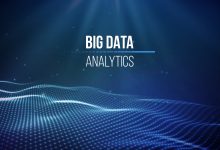According to a recent marketing report by Forrester Research, artificial intelligence (AI) is moving beyond the buzzword stage as organizational leaders start to realize the amount of work required to make significant use of the technology. The study notes notes that implementing AI to meet objectives requires precise deployment, planning, and governance. Despite this, the report forecasts vast improvements in the technology as big data trends lean further toward AI. In fact, Forrester foresees a redesign of data analysis and management roles that will change intelligence delivery logistics and create a new information marketplace. This revelation is highly likely, as up to 70 percent of businesses plan to implement AI technology in 2018, representing a gain of more than 50 percent compared to the previous year.
However, a recent Forbes Magazine article looks at the development of artificial intelligence from another angle. The story envisions AI as a resource that will give suggestions to consumers, deliver tentative terms for vendors, and guide employees in the workplace without human intervention. The article also forecasts that AI will deliver actionable analysis of unstructured information that rivals the evaluation of structured information sources parsed with big data systems. Additionally, more companies could acquire the ability to make use of hundreds of terabytes of existing unstructured data in the coming months. However, 2018 is also the year that many companies possessing this volume of information, often referred to as data lakes, will demand a return on investment for AI initiatives, and might pull the plug if the resource doesn’t produce quantifiable improvements.
This offers just one tiny peek at all that is ahead for artificial intelligence and big data this year. The following five trends provide more glimpses of what we can expect for big data in 2018.
Trend 1: Enhanced Cybersecurity
Compelled by legal requirements, care provider organizations have moved ahead with the implementation of electronic health records at a blistering pace. Unfortunately, health care cyber security breaches have grown in tandem. In fact, nearly 90 percent of all care provider organizations have experienced digital security breaches over the last two years, which has cost them an average of $2.2 million each.
Cyberattackers are drawn to specific medical information for its high resale value. This development places hospitals at risk of losing patient trust, which forces care providers to shore up their digital domains.
Trend 2: Improved Community Policing
In the United States, crimes rates have fallen drastically over the last 20 years. Law enforcement officials credit this improvement to a big data technology called CompStat that launched in 1994. The system analyzes statistics from across the nation, aiding police departments in better understanding and fighting crime. Despite this significant improvement, officials believe that CompStat is still only operating at a fraction of its full potential. More improvement will come, as engineers deliver additional capabilities that could allow police departments to monitor data on excessive use of force and aid in the deployment of body cam hardware.
Trend 3: The Expanding Internet of Things (IoT)
All kinds of electronic devices, ranging from home appliances to advanced security systems, are connected to the internet and sharing real-time data. These connected devices combine to form the Internet of Things (IoT). The IoT is now growing into a maturing resource that’s attracting the attention of enterprises. With IoT spending forecast to climb to $6 trillion by 2021, analysts predict a deluge of responsive smart networking devices to emerge in the forthcoming years. This development has taken root just in time for businesses to use AI and for big data solutions to exploit the torrent of information generated by the IoT. In fact, analysts predict that the Internet of Things will contribute $15 trillion to the global gross domestic product between 2018 and 2030.
Trend 4: Artificial Intelligence for the Masses
AI is moving beyond the sole purview of conglomerate behemoths. A new breed of “plug and play” AI business solutions is arriving on the market and already in use by many organizations. The innovative technology includes applications such as widely used chatbots and critical search engine thinkers.
Experts predict that approximately 75 percent of all developers will incorporate AI technology into their work by the end of 2018. This trend is fostered by the collaboration of software giants Microsoft and Amazon in producing the Gluon Network Project, an open source, easy-to-use learning resource for artificial intelligence developers. Because of this transparency, the market for big data technology is already nearing $34 billion in revenue.
Trend 5: A Relatively New Occupation Comes to the Forefront
The chief digital officer (CDO) role will carry a lot more weight moving into 2018. Right now, data is one of the most valuable resources on the planet, positioning CDOs – whose job encompasses extracting value from data – closer to the head of the executive pack. CDOs with capital resources that are small relative to the size of their organizations will face a challenge in producing requisite measurable and actionable results in the coming year. Fortunately, these professionals will have the flexible power of artificial intelligence and the foundations of big data analysis to make this career-propelling achievement a reality. CDOs with the acumen and skill to exploit structured and unstructured big data sets using AI to provide solutions for all business units will find the most career success moving forward.
Business enterprises, nonprofit organizations and government agencies must understand what motivates consumers and clients as their needs and desires evolve over time. Because of this, big data coupled with artificial intelligence technology will move to the forefront of research and development now more than ever, producing actionable reports for organizational stakeholders that’s garnered from terabytes of proprietary data.
The post These 5 Buzzworthy Big Data Trends Are Huge In 2018 appeared first on SmartData Collective.
